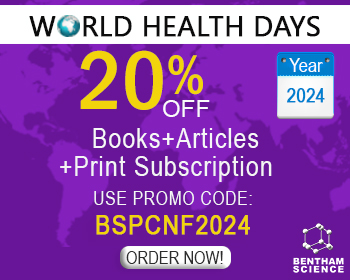Abstract
Tauopathies are neurodegenerative disorders characterized by the deposition of abnormal tau protein in the brain. The application of potentially effective therapeutics for their successful treatment is hampered by the presence of a naturally occurring brain protection layer called the blood-brain barrier (BBB). BBB represents one of the biggest challenges in the development of therapeutics for central nervous system (CNS) disorders, where sufficient BBB penetration is inevitable. BBB is a heavily restricting barrier regulating the movement of molecules, ions, and cells between the blood and the CNS to secure proper neuronal function and protect the CNS from dangerous substances and processes. Yet, these natural functions possessed by BBB represent a great hurdle for brain drug delivery. This review is concentrated on summarizing the available methods and approaches for effective therapeutics’ delivery through the BBB to treat neurodegenerative disorders with a focus on tauopathies. It describes the traditional approaches but also new nanotechnology strategies emerging with advanced medical techniques. Their limitations and benefits are discussed.
Keywords: CNS, blood-brain barrier (BBB), Alzheimer's disease, brain drug delivery, drug targeting, Tauopathies.
[http://dx.doi.org/10.1038/nrd.2015.21] [PMID: 26794270]
[http://dx.doi.org/10.1602/neurorx.2.1.3] [PMID: 15717053]
[http://dx.doi.org/10.1016/B978-0-12-802395-2.00025-0] [PMID: 28987182]
[http://dx.doi.org/10.1016/j.parkreldis.2015.09.020] [PMID: 26382841]
[http://dx.doi.org/10.1111/j.1445-5994.2006.01153.x] [PMID: 16958643]
[http://dx.doi.org/10.1016/j.bcp.2014.01.002] [PMID: 24418409]
[http://dx.doi.org/10.2174/092986708785909111] [PMID: 18855662]
[http://dx.doi.org/10.1186/1750-1326-4-13] [PMID: 19284597]
[http://dx.doi.org/10.1038/nrneurol.2009.24] [PMID: 19347026]
[http://dx.doi.org/10.1111/j.1749-6632.1991.tb00204.x] [PMID: 1776729]
[http://dx.doi.org/10.1038/ncb1104-1054] [PMID: 15516999]
[http://dx.doi.org/10.3390/ijms20020381] [PMID: 30658419]
[http://dx.doi.org/10.1126/science.1566067] [PMID: 1566067]
[http://dx.doi.org/10.1111/j.1365-2990.1987.tb00174.x] [PMID: 3614544]
[http://dx.doi.org/10.1016/S0140-6736(17)32399-1] [PMID: 29185425]
[PMID: 28248932]
[http://dx.doi.org/10.1080/10717544.2018.1428243] [PMID: 29350055]
[http://dx.doi.org/10.1177/1535370217743766] [PMID: 29169241]
[http://dx.doi.org/10.3390/cells7040024] [PMID: 29570659]
[http://dx.doi.org/10.1016/j.nbd.2009.07.028] [PMID: 19664710]
[http://dx.doi.org/10.1016/j.drudis.2006.10.013] [PMID: 17198973]
[http://dx.doi.org/10.1016/S0169-409X(00)00139-3] [PMID: 11259843]
[http://dx.doi.org/10.1016/S0169-409X(98)00087-8] [PMID: 10837722]
[http://dx.doi.org/10.1016/S0168-3659(00)00339-4] [PMID: 11166403]
[http://dx.doi.org/10.1166/jnn.2006.441] [PMID: 17048477]
[http://dx.doi.org/10.1016/j.addr.2011.11.010] [PMID: 22154620]
[http://dx.doi.org/10.1016/j.ijpharm.2006.11.051] [PMID: 17184941]
[http://dx.doi.org/10.1080/10611860305553] [PMID: 12852438]
[http://dx.doi.org/10.1186/2047-9158-1-10] [PMID: 23211041]
[http://dx.doi.org/10.1038/nn.3966] [PMID: 25730668]
[http://dx.doi.org/10.1016/j.jalz.2018.06.739]
[http://dx.doi.org/10.1016/j.semcdb.2015.01.002] [PMID: 25681530]
[http://dx.doi.org/10.1074/jbc.M010897200] [PMID: 11278779]
[http://dx.doi.org/10.1038/s41598-019-49009-z] [PMID: 31492955]
[http://dx.doi.org/10.1007/s11095-012-0966-3] [PMID: 24137801]
[http://dx.doi.org/10.1016/j.bmcl.2018.07.030] [PMID: 30055889]
[http://dx.doi.org/10.1007/s11095-018-2546-7] [PMID: 30488131]
[http://dx.doi.org/10.1124/jpet.102.045856] [PMID: 12604705]
[http://dx.doi.org/10.1111/j.1600-0773.1992.tb00512.x] [PMID: 1523192]
[http://dx.doi.org/10.1074/jbc.272.25.16010] [PMID: 9188504]
[http://dx.doi.org/10.1080/10611860400015936] [PMID: 15621689]
[http://dx.doi.org/10.1007/s11095-010-0291-7] [PMID: 20924653]
[http://dx.doi.org/10.1146/annurev-pharmtox-010814-124852] [PMID: 25340933]
[http://dx.doi.org/10.1007/s40259-017-0248-z] [PMID: 29067674]
[http://dx.doi.org/10.4155/fmc.09.140] [PMID: 20161623]
[PMID: 8967351]
[http://dx.doi.org/10.1016/0006-8993(92)91652-U] [PMID: 1450923]
[http://dx.doi.org/10.1159/000065699] [PMID: 12401948]
[http://dx.doi.org/10.1073/pnas.92.7.2820] [PMID: 7708731]
[http://dx.doi.org/10.1080/10611860600612953] [PMID: 16603451]
[http://dx.doi.org/10.1016/j.ejpb.2008.08.021] [PMID: 18805484]
[http://dx.doi.org/10.1124/pr.54.4.561] [PMID: 12429868]
[http://dx.doi.org/10.1038/312162a0] [PMID: 6095085]
[http://dx.doi.org/10.1007/s004180050266] [PMID: 9681691]
[PMID: 10688622]
[http://dx.doi.org/10.1016/j.brainres.2006.07.005] [PMID: 16884698]
[PMID: 8858978]
[http://dx.doi.org/10.1124/jpet.301.2.605] [PMID: 11961063]
[http://dx.doi.org/10.1073/pnas.91.19.9077] [PMID: 8090772]
[http://dx.doi.org/10.1016/0006-8993(91)90784-S] [PMID: 1723639]
[http://dx.doi.org/10.1016/j.ddtec.2016.07.009] [PMID: 27986223]
[PMID: 12097468]
[http://dx.doi.org/10.1073/pnas.88.11.4771] [PMID: 2052557]
[http://dx.doi.org/10.1016/0301-0082(91)90015-S] [PMID: 1887067]
[http://dx.doi.org/10.1016/j.pharmthera.2012.07.006] [PMID: 22820012]
[http://dx.doi.org/10.1016/j.euroneuro.2014.01.020] [PMID: 24529663]
[http://dx.doi.org/10.1007/BF00254492]
[http://dx.doi.org/10.1080/10611860600650086] [PMID: 16777679]
[http://dx.doi.org/10.1016/0006-8993(87)90236-8] [PMID: 3315116]
[http://dx.doi.org/10.1210/edrv-7-3-314] [PMID: 3017689]
[http://dx.doi.org/10.1023/A:1016244500596] [PMID: 7667183]
[http://dx.doi.org/10.1016/0169-409X(95)00003-P]
[http://dx.doi.org/10.1172/JCI119708] [PMID: 9312181]
[http://dx.doi.org/10.1002/bit.21120] [PMID: 16937408]
[http://dx.doi.org/10.1023/A:1007592720793] [PMID: 10801214]
[http://dx.doi.org/10.1016/j.ymeth.2005.01.001] [PMID: 15848070]
[http://dx.doi.org/10.1016/1044-7431(92)90027-Y] [PMID: 19912873]
[http://dx.doi.org/10.1016/j.tins.2011.12.007] [PMID: 22341662]
[http://dx.doi.org/10.1073/pnas.0405042101] [PMID: 15314220]
[http://dx.doi.org/10.1016/S0026-0495(98)90007-5] [PMID: 2963191]
[http://dx.doi.org/10.1016/S0014-5793(03)00042-5] [PMID: 12586351]
[http://dx.doi.org/10.1517/17425247.2.2.299] [PMID: 16296755]
[http://dx.doi.org/10.1046/j.1471-4159.2002.01201.x] [PMID: 12421365]
[http://dx.doi.org/10.1016/j.ics.2005.02.021]
[http://dx.doi.org/10.1038/srep12651] [PMID: 26219474]
[http://dx.doi.org/10.1016/j.biomaterials.2011.11.018] [PMID: 22133551]
[http://dx.doi.org/10.1021/mp500084s] [PMID: 24964270]
[http://dx.doi.org/10.1007/s11095-009-9964-5] [PMID: 19774344]
[http://dx.doi.org/10.1038/bjp.2008.260] [PMID: 18574456]
[http://dx.doi.org/10.1158/1538-7445.SABCS18-OT1-06-01]
[http://dx.doi.org/10.1038/nrn2620] [PMID: 19339974]
[http://dx.doi.org/10.1038/ng.2802] [PMID: 24162737]
[http://dx.doi.org/10.1038/nrneurol.2012.263] [PMID: 23296339]
[http://dx.doi.org/10.1006/exnr.2001.7541] [PMID: 11161595]
[http://dx.doi.org/10.1016/j.biomaterials.2008.08.004] [PMID: 18760470]
[http://dx.doi.org/10.1080/10611860290031877] [PMID: 12164380]
[http://dx.doi.org/10.1124/jpet.105.097139] [PMID: 16554356]
[http://dx.doi.org/10.1080/10611860903105986] [PMID: 19694613]
[http://dx.doi.org/10.1038/nmeth762] [PMID: 15908920]
[http://dx.doi.org/10.1038/ncomms14967] [PMID: 28367972]
[http://dx.doi.org/10.1172/JCI111976] [PMID: 3874882]
[http://dx.doi.org/10.1016/j.jconrel.2006.09.050] [PMID: 17718973]
[PMID: 30374472]
[http://dx.doi.org/10.2174/15672050113106660174] [PMID: 24156262]
[http://dx.doi.org/10.1101/cshperspect.a006189] [PMID: 22229116]
[http://dx.doi.org/10.1371/journal.pone.0168812] [PMID: 28005991]
[http://dx.doi.org/10.2174/138920207783769549] [PMID: 19415128]
[http://dx.doi.org/10.21037/jtd.2018.04.171] [PMID: 30023102]
[http://dx.doi.org/10.1186/alzrt269] [PMID: 25024750]
[http://dx.doi.org/10.1016/j.msec.2017.06.004] [PMID: 28866227]
[http://dx.doi.org/10.1371/journal.pone.0032616] [PMID: 22403681]
[http://dx.doi.org/10.1016/j.bcp.2009.09.003] [PMID: 19735646]
[http://dx.doi.org/10.1021/nn405077y] [PMID: 24467380]
[http://dx.doi.org/10.18632/oncotarget.20944] [PMID: 29113362]
[http://dx.doi.org/10.1016/j.nano.2016.12.003] [PMID: 27986603]
[http://dx.doi.org/10.1016/j.nano.2017.12.006] [PMID: 29248676]
[http://dx.doi.org/10.1517/17425247.2013.766714] [PMID: 23373728]
[http://dx.doi.org/10.2147/IJN.S117210] [PMID: 27799765]
[http://dx.doi.org/10.1016/j.addr.2004.07.005] [PMID: 15381330]
[http://dx.doi.org/10.1016/j.nano.2015.10.021] [PMID: 26711963]
[http://dx.doi.org/10.1002/ptr.2902] [PMID: 19688719]
[http://dx.doi.org/10.1016/S0014-5793(98)00367-6] [PMID: 9600261]
[http://dx.doi.org/10.1023/A:1026462629438] [PMID: 11145226]
[PMID: 8494052]
[http://dx.doi.org/10.1007/s11373-006-9121-7] [PMID: 17048089]
[http://dx.doi.org/10.2147/IJN.S132472] [PMID: 28435263]
[http://dx.doi.org/10.1016/j.colsurfb.2016.08.052] [PMID: 27591943]
[http://dx.doi.org/10.1016/j.ejps.2014.06.024]
[http://dx.doi.org/10.1080/1061186X.2017.1354002] [PMID: 28697660]
[http://dx.doi.org/10.1002/adma.201101899] [PMID: 21898606]
[http://dx.doi.org/10.1002/ptr.5957] [PMID: 29047177]
[http://dx.doi.org/10.1038/aps.2012.3] [PMID: 22447225]
[http://dx.doi.org/10.1038/nnano.2009.195] [PMID: 19734930]
[http://dx.doi.org/10.1021/nn901372t] [PMID: 20553005]
[http://dx.doi.org/10.1016/j.biomaterials.2015.10.019] [PMID: 26513421]
[http://dx.doi.org/10.1038/s41467-019-11593-z] [PMID: 31395892]
[http://dx.doi.org/10.1016/S0169-409X(00)00129-0] [PMID: 11259830]
[http://dx.doi.org/10.2174/0929867311320170006] [PMID: 23458620]
[http://dx.doi.org/10.2147/IJN.S61288] [PMID: 24872687]
[PMID: 10027874]
[http://dx.doi.org/10.1016/j.jconrel.2008.04.013] [PMID: 18534704]
[http://dx.doi.org/10.2174/13816128113199990463] [PMID: 23789948]
[http://dx.doi.org/10.1016/j.beem.2014.12.001] [PMID: 25987170]
[http://dx.doi.org/10.1186/s13052-018-0563-0] [PMID: 30442184]
[PMID: 810575]
[http://dx.doi.org/10.1016/j.pediatrneurol.2016.10.022] [PMID: 28089765]
[http://dx.doi.org/10.1159/000017069] [PMID: 9701676]
[http://dx.doi.org/10.1212/WNL.60.1.69] [PMID: 12525720]
[http://dx.doi.org/10.1002/ana.20374] [PMID: 15668979]
[http://dx.doi.org/10.1080/14660820510028412] [PMID: 16036433]
[http://dx.doi.org/10.1007/s11033-019-04983-5] [PMID: 31327120]
[http://dx.doi.org/10.3171/jns.1995.82.6.1021] [PMID: 7539062]
[http://dx.doi.org/10.1073/pnas.91.6.2076] [PMID: 8134351]
[PMID: 8531140]
[http://dx.doi.org/10.1227/00006123-198203000-00009] [PMID: 7200201]
[http://dx.doi.org/10.1016/0006-8993(85)91036-4] [PMID: 4039212]
[http://dx.doi.org/10.3171/foc.2006.20.4.8] [PMID: 16709018]
[http://dx.doi.org/10.3390/scipharm87010006]
[http://dx.doi.org/10.1093/neuonc/5.2.79] [PMID: 12672279]
[http://dx.doi.org/10.1097/CAD.0b013e328011a51d] [PMID: 17264760]
[http://dx.doi.org/10.1002/mds.21503] [PMID: 17443702]
[http://dx.doi.org/10.1016/S1474-4422(08)70065-6] [PMID: 18387850]
[http://dx.doi.org/10.7150/thno.21254] [PMID: 29556336]
[http://dx.doi.org/10.4155/tde.10.50] [PMID: 22833965]
[http://dx.doi.org/10.1016/S0361-9230(01)00775-4] [PMID: 12031278]
[http://dx.doi.org/10.3389/fnana.2017.00029] [PMID: 28442998]
[http://dx.doi.org/10.1016/S0002-9394(00)00442-6] [PMID: 10844080]
[http://dx.doi.org/10.1038/433561a] [PMID: 15703711]
[http://dx.doi.org/10.1227/01.NEU.0000097715.11966.8E] [PMID: 14683550]
[http://dx.doi.org/10.1097/00006123-199805000-00082] [PMID: 9588554]
[http://dx.doi.org/10.3171/2015.1.FOCUS14767] [PMID: 25727219]
[PMID: 121949]
[PMID: 7377381]
[http://dx.doi.org/10.3171/2010.9.JNS101223] [PMID: 20964595]
[PMID: 20023537]
[http://dx.doi.org/10.1007/s002620050328] [PMID: 9003470]
[http://dx.doi.org/10.1080/01616412.1992.11740093] [PMID: 1282688]
[http://dx.doi.org/10.1371/journal.pone.0037485] [PMID: 22629405]
[http://dx.doi.org/10.1016/S0959-8049(98)00155-5] [PMID: 9893673]
[http://dx.doi.org/10.4049/jimmunol.1103460] [PMID: 22896632]
[PMID: 8752174]
[http://dx.doi.org/10.3171/jns.1994.81.5.0752] [PMID: 7931623]
[PMID: 10869391]
[http://dx.doi.org/10.1093/neuonc/5.2.96] [PMID: 12672281]
[http://dx.doi.org/10.1002/mrm.20118] [PMID: 15236372]
[http://dx.doi.org/10.1016/j.ultrasmedbio.2012.02.019] [PMID: 22677255]
[http://dx.doi.org/10.1080/17425247.2018.1547279] [PMID: 30415585]
[PMID: 30095337]
[http://dx.doi.org/10.1016/j.neuroimage.2019.06.060] [PMID: 31254646]
[http://dx.doi.org/10.3171/jns.2004.100.3.0472] [PMID: 15035283]
[http://dx.doi.org/10.1200/JCO.2006.08.1117] [PMID: 17327604]
[http://dx.doi.org/10.1227/01.NEU.0000159649.71890.30] [PMID: 15918940]
[http://dx.doi.org/10.1215/S1522851705000475] [PMID: 16443949]
[http://dx.doi.org/10.1093/neuonc/nop047] [PMID: 20308317]
[http://dx.doi.org/10.1007/BF02700027] [PMID: 12952293]
[http://dx.doi.org/10.1038/nm1297-1362] [PMID: 9396606]
[http://dx.doi.org/10.1023/A:1026246500788] [PMID: 14649881]
[http://dx.doi.org/10.2174/1381612822666151221150733] [PMID: 26685681]
[http://dx.doi.org/10.1158/1078-0432.CCR-12-2481] [PMID: 23349317]
[http://dx.doi.org/10.1023/A:1006379332212] [PMID: 10619497]
[http://dx.doi.org/10.1200/JCO.2008.19.3789] [PMID: 19451444]
[http://dx.doi.org/10.1159/000120809] [PMID: 7947304]
[http://dx.doi.org/10.1007/BF00172455] [PMID: 1541977]
[http://dx.doi.org/10.1073/pnas.1015771108] [PMID: 21300891]
[http://dx.doi.org/10.1227/00006123-198007000-00006] [PMID: 6774280]
[http://dx.doi.org/10.1038/jcbfm.1994.108] [PMID: 8063881]
[http://dx.doi.org/10.1016/j.jconrel.2014.05.033] [PMID: 24878186]
[http://dx.doi.org/10.1016/j.jconrel.2007.08.003] [PMID: 17884232]



























